DESIGN KEYS AND SPLINE SHAFT (pure terms)
1/43
There's no tags or description
Looks like no tags are added yet.
Name | Mastery | Learn | Test | Matching | Spaced |
|---|
No study sessions yet.
44 Terms
keyed joints
are made up of keys and keyways.
Keys
can be machined to different forms depending on the type of key joints required
keyways
are machined surfaces on a shaft in the dimension of the key.
true
fixed together to ensure no pulling apart of component and prevent a relative movement between a shaft
keyseat
a ______ the rotating machine element.
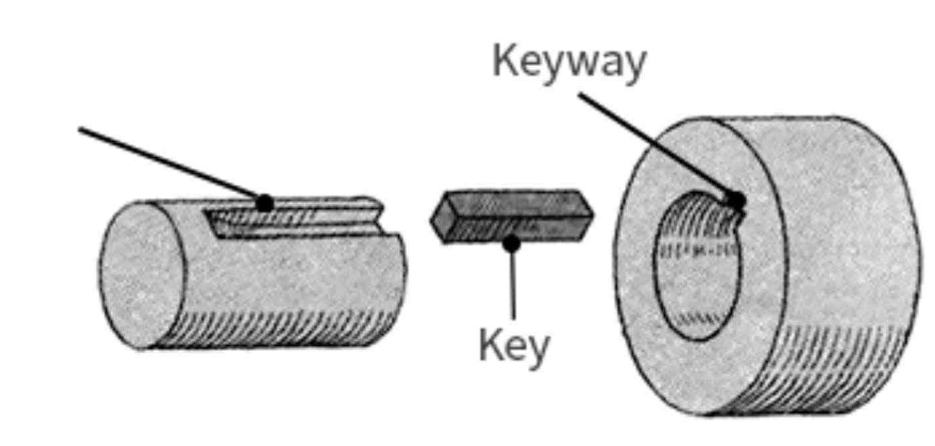
key
is a machine element that is used to join a rotating machine element to a shaft.
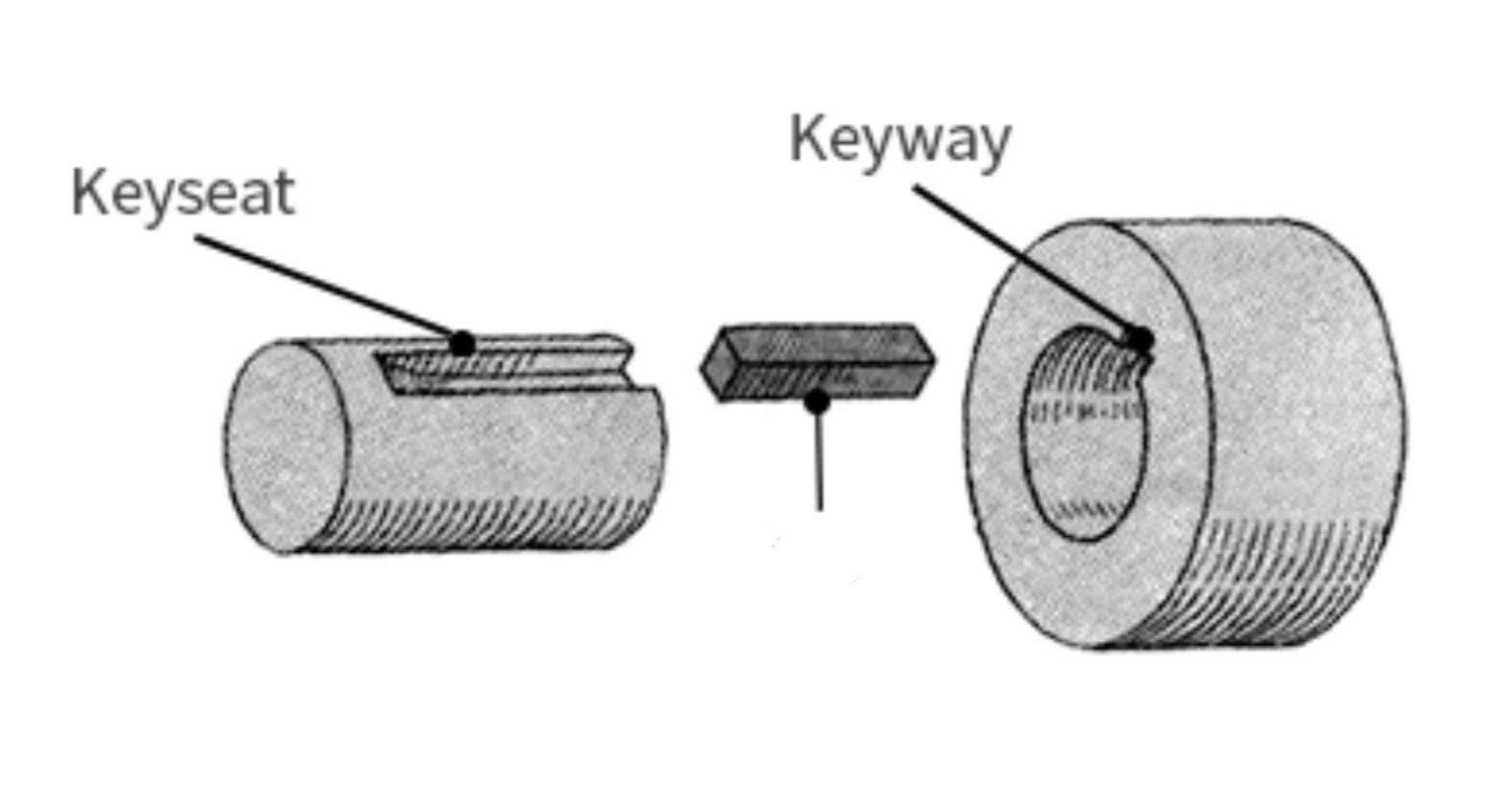
keyways
For a key to function, there must a ____ on the shaft
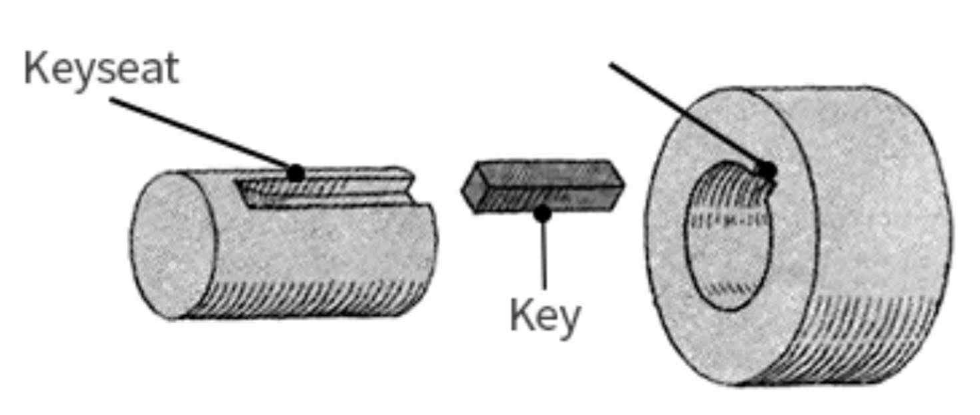
keyed joint
The key is then tightly fitted between the keyway and the keyseat, hence the mechanism is called
key and keyway
The primary function is to make up keyed joints to secure the hub and shaft so that relative movement between a power transmitting shaft and attached component won’t occur.
key and keyway
A keyed joint often allows relative axial movement between the components. This key prevents relative rotation between the two parts and may enable torque transmission
keyed joint applications
important part of mechanical power transmission elements shaft and couplings. It ensures efficient transmission of the load, power, and rotation with slipping.
key and keyway applications
application is gear drives, pulleys, or sprockets tightly connected with a key to the power transmitting shaft
keyed joints applications
are a convenient method of creating a secure connection between shafts and sprockets.
keyed joints applications
it is used as an alternative on other shaft applications where the load needs to be pulled or push. This is often found in
agricultural applications, machine tools, industrial equipment, etc.
keyways and keyseats
Milling, Slotter, and Shaper Machine are the common machine tools used to create
Flat Bottom
Type of key
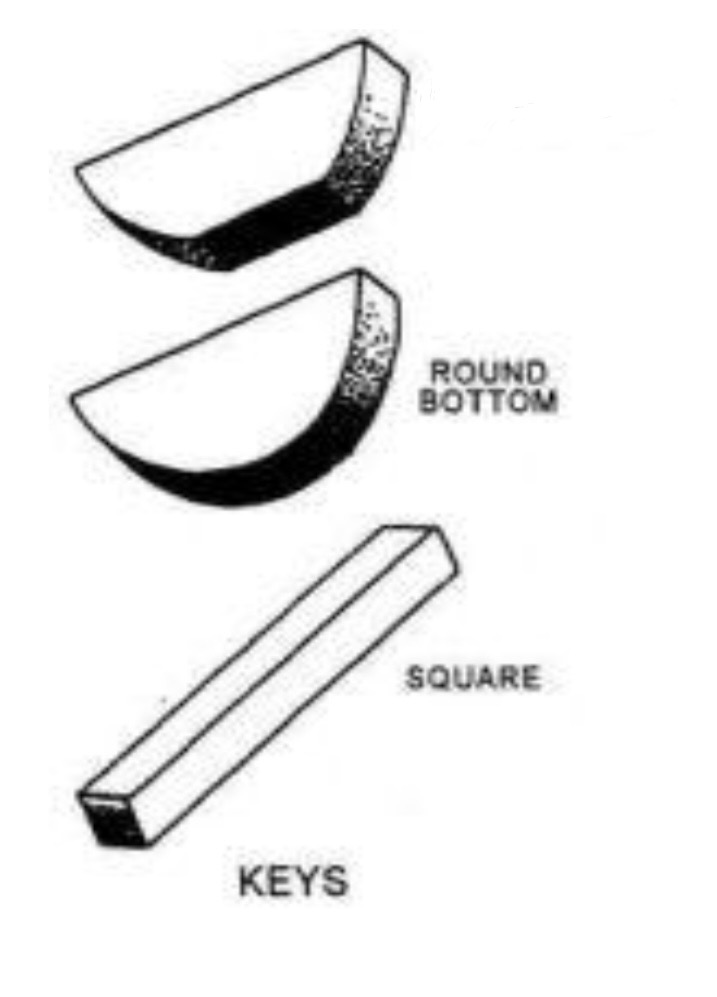
Round Bottom
Type of key
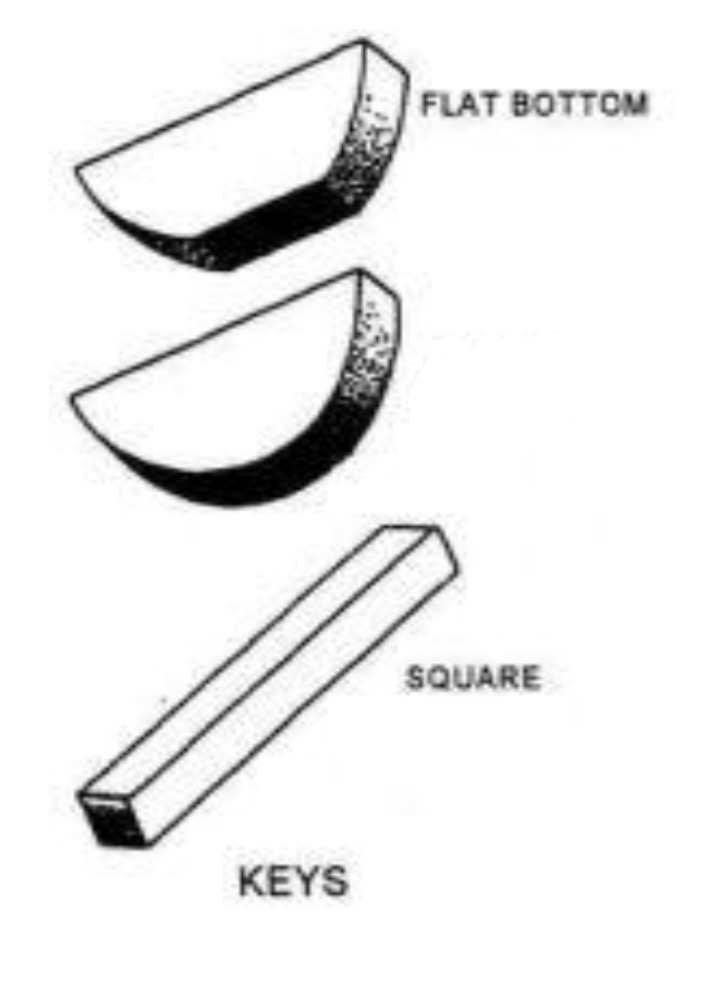
Square
Type of key
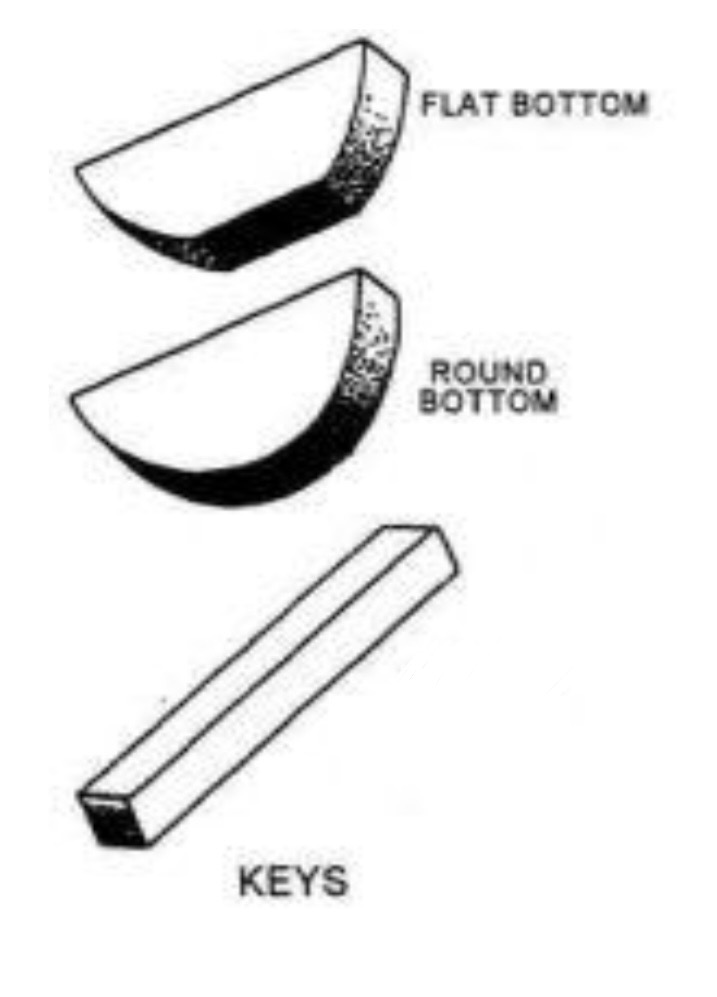
key and keyways
Since there are various types of keyed joints, _____ will be different depending on the type and additional feature.
key, keyseat, and keyway
The major components of keyed joints
key
is usually made of steel machined to rectangular, square, or circular shape.
key
It’s inserted between the shaft and the hub of the component in an axial direction to prevent relative movement
keyseat
this is the technical name of a recess area in the shaft. It’s often performed on a shaper machine.
keyway
is also a recess in the hub that receives the key and securely locks the mechanism.
keyseat and keyway
shares half portion of the key
Sunk keys
types of keys that are designed so that half-thickness of the rod is sunk into the shaft and the remaining half will be for the keyseat.
sunk keys
For the attainment of this keyed joint, accuracy is very important.
For instance, if a key is 8mm, the shaft keyway will be machined
at the depth of 4.1mm same as the keyseat
Rectangular/Square keys
These types of keys are sometimes called flat keys as they are wider than their height. They are often used on shafts of about 500mm or 20 in diameter. The remaining key width allows greater transmission torque without increasing the depth. An increased depth means a weaker shaft due to a reduction in effective shaft cross-sectional area.
square key
has a square cross-sectional and is used on a shaft of about 25mm or 1”. They are used on larger shafts when deeper key depth is required compared to rectangular keys. However, an increase in depth means a weaker shaft, because of the reduction in effective shaft cross-sectional area
Parallel Sunk Keys
are either rectangular or square sections but not having tapers. The keys are cheap and readily available for use. It’s one of the easiest to install, but it needs to be held with a set of screws to the hub. This is because the vibration or rotational direction reversal often push out the key
Gib Head Sunk Key
either rectangular or square in shape with a taper on the top surface to get a tight fit. It’s employed so that it can be easier to remove
double-headed, peg feather, and feather key.
Three types of Feather Keys
Feather Keys
attached to either the shaft or the hub to cause a relative axial movement. It enables power transmission between the shaft and hub with its parallel opposite faces. Hence allowing it to slide.
Woodruff Keys
semi-circular disc fit into a circular recess of a shaft which can be only machined by a woodruff keyway cutter. It’s mostly used in machine tools and some automobile shafts from ¼” to 2½” (6mm to 60mm) diameter. The strength of it will offer is extremely different from the long parallel keys, this means they cannot carry the same load.
Saddle Keys
are not sunk into shafts but instead, they are sunk into the hub only. They either sit on a flat or circumference of the shaft, while the power transmission is achieved through the friction between the shaft and the key. They are used only for light loads to avoid slipping along the shaft.
Flat Saddle Key
types of saddle key are tapered at the top and flat at the bottom as it fits into a tapered hub keyway pushing down on the flat face of the shaft.
Hollow Saddle Key
type of saddle key is tapered at the top and curved at the bottom edge. The key is fit into a tapered hub keyway and pushed down on the curved circumferential surface of the shaft.
Tangent Keys
types of keys are sometimes called tangential keys. They are fitted as a pair at a right angle where each key withstands torsion in one direction only. They are often used in large heavy-duty shafts.
Round/Circular Keys
are circular in section, inserted into holes partly drilled in a shaft and hub. These types of keys are easy to manufacture as the keyways may be drilled or reamed after the mating parts are assembled. Suitable for low power drives.
Advantages of Keyed Joints
Their production cost is drastically low.
Offers medium to high torque transmission.
Easy to mount and dismount.
Can be reused or fixed on other components of the same type.
It’s a standard method (ISO, BS, DIN, & ANSI).
Disadvantages of Keyed Joints
It’s cannot be used for alternating directional loads and shocks.
Too much securely fixed keyed joint might become difficult to dismantle.
Causes shaft imbalance.
They introduce stress points due to the notch effect and reduce shaft strength.
Possible axial displacement of hub unless locked by an extra component such as circlip or set screw.
It is difficult to calculate and combine the load-carrying and the tolerance stack analysis.
Spline Shaft
shaft with series of permanent keys formed longitudinally around its circumference.
Spline Shafts
are frequently used in automobiles, aviation, and earth moving machinery as they can handle high rotation speeds to deliver torque.
Spline Shafts
Unlike alternative shafts like key shafts, ____ can deliver more torque due to the even distribution of the load across all the teeth or grooves.